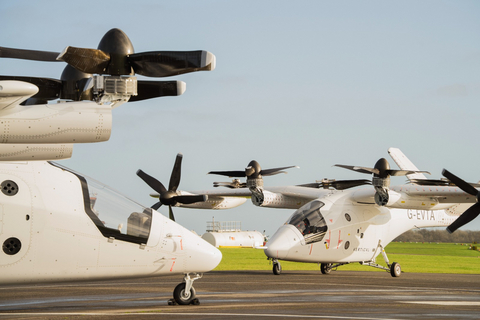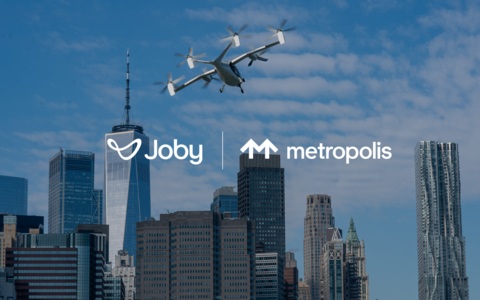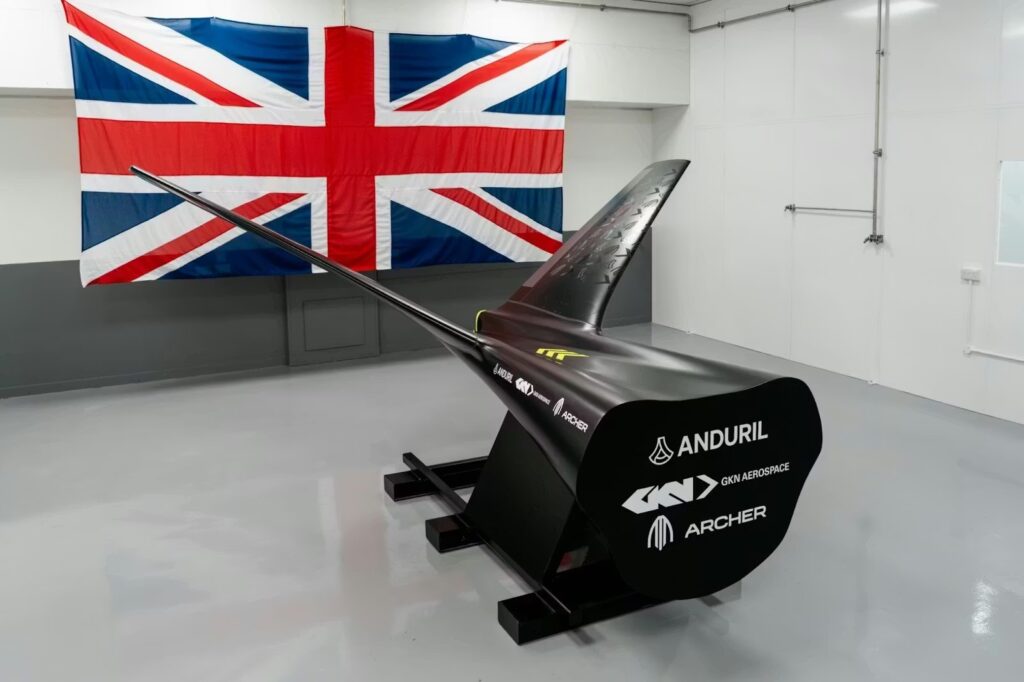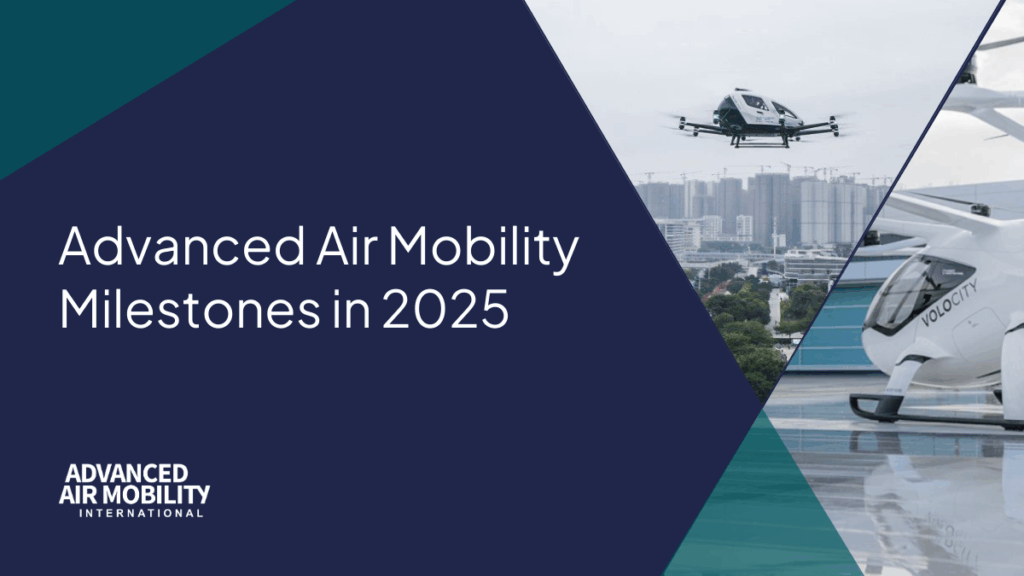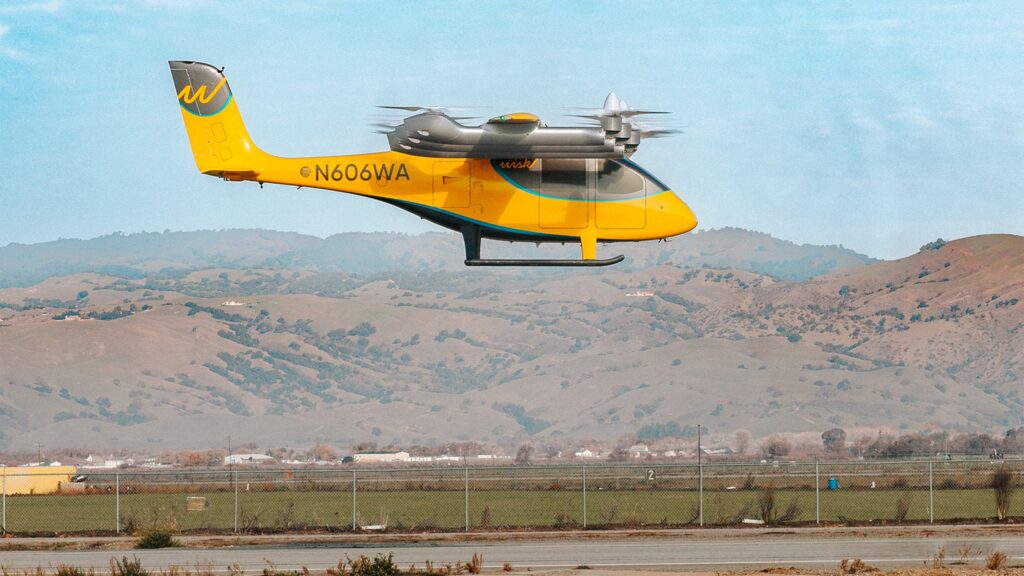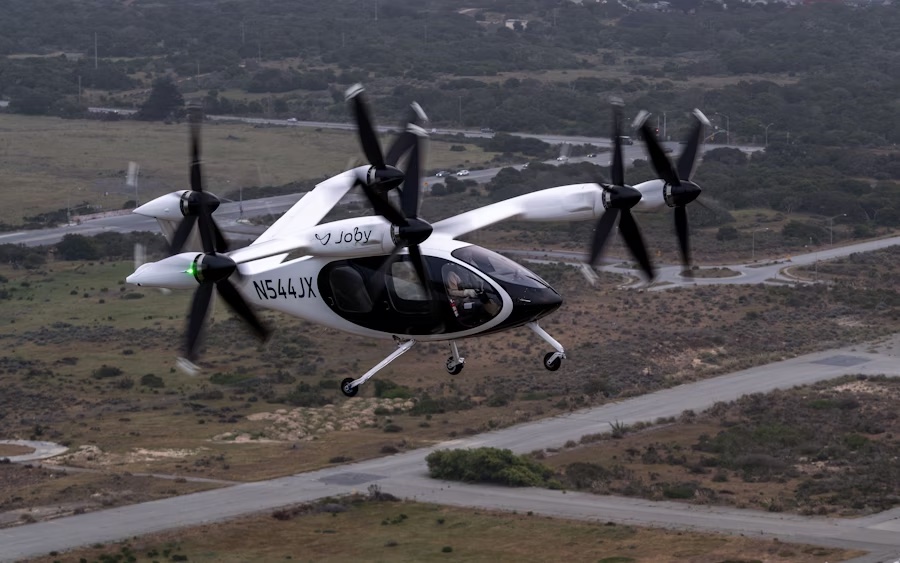
Joby Aviation has reached a significant milestone in the development of its electric air taxi, completing piloted transition flights that shift the aircraft from vertical take-off to wingborne cruise and back again—marking a pivotal achievement in the company’s test campaign.
This transition capability is central to Joby’s eVTOL design, which combines the vertical take-off and landing flexibility of a helicopter with the speed and efficiency of a fixed-wing aircraft in forward flight. The ability to smoothly transition between these two modes of flight enables high-speed, point-to-point travel with minimal ground infrastructure, a key enabler for scalable urban and regional air mobility.
The landmark transition flight with a pilot onboard took place on April 22, 2025, at Joby’s flight test facility in Marina, California. Chief Test Pilot James “Buddy” Denham conducted the mission in the latest prototype (registration N544JX), built at Joby’s production line at the same location. Denham, a veteran test pilot who joined Joby in 2019 after leading advanced flight control programs at the U.S. Naval Air Systems Command, executed a vertical take-off, transitioned to full wingborne flight, and returned for a controlled vertical landing.
Since that inaugural piloted transition, Joby has completed multiple similar flights with three different pilots, becoming the first eVTOL developer to routinely carry out inhabited transitions between hover and cruise.
Didier Papadopolous, President of Aircraft OEM at Joby, commented, “Achieving this milestone is hugely significant for Joby. It not only demonstrates the high level of confidence we have in the performance of the aircraft as we prepare for commercial service in Dubai, it also paves the way to starting TIA flight testing with FAA pilots onboard.
“We have taken a very methodical approach to achieving this long-planned milestone, with an immense amount of testing, both in the air and on the ground, helping form a solid foundation that allowed us to move from one historic flight to routine pilot-on-board transitions almost overnight.”
Commenting on the flight, Denham added, “I’m honored to have played a role in this historic moment. Designing and flying an aircraft that can seamlessly transition between vertical and cruise flight has long been considered one of the most challenging technological feats in aerospace, but our team has developed and built an aircraft that makes it feel like an everyday task. The aircraft flew exactly as expected, with excellent handling qualities and low pilot workload.”
The company’s comprehensive approach to safety and redundancy was critical to this milestone. Thousands of hours of ground-based testing were carried out at Joby’s Integrated Test Lab, where hardware and software identical to flight units were evaluated under realistic operating conditions. Simulated component failures—such as propulsion unit and battery outages—were also tested during remote flights at Edwards Air Force Base to verify system resilience and redundancy.
Joby’s piloted flight testing builds on years of incremental progress. The company first demonstrated full-scale transition flight in 2017 using remotely piloted aircraft. Since then, its test fleet has logged over 40,000 miles of flight testing, including hundreds of transition flights and more than 100 crewed flights in hover and low-speed regimes.
With five aircraft currently in its test fleet—two of which are stationed at Edwards AFB under a partnership with U.S. defense agencies—Joby continues to validate its technology in a variety of environments. Demonstration flights have also been conducted in New York City, Japan, and South Korea, supporting both regulatory engagement and operational readiness.
Joby’s electric air taxi is designed to carry a pilot and up to four passengers at speeds of up to 200 mph (321 km/h), with a low acoustic footprint and zero in-flight emissions. The company remains on schedule to deliver an aircraft to Dubai by mid-2025, where it will undergo flight testing ahead of expected commercial service in the region.


